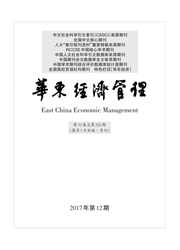

 中文摘要:
中文摘要:
文章以中部崛起和两型社会建设为时点分界线,针对湖南省和湖北省不同时期不同来源的碳排放量应用LMDI分解和SDA分解方法,综合分析湘鄂两省碳排放历史规律。研究结果表明:在两型社会建设后,湖南比湖北具有更突出的减排效率,但整体而言湖北碳排放相对稳定;来源端方面,两型社会战略实施后,两省碳排放增长的主要拉动来自非化石燃料;生产端方面,两省碳排放路径较为类似,主要区别体现在能源效率上;需求端方面,诱发碳排放变化的区别主要体现在中间投入结构,特别是最终需求结构。
 英文摘要:
英文摘要:
The paper, taking the point on the Rise of Central China and the construction of Two-oriented Society as the boundary, applies LMDI and SDA methods to comprehensively analyze carbon emissions in Hunan and Hubei provinces in different periods according to their different sources. The results show that:Hunan province has a more prominent emissions efficiency after the construction of Two-oriented Society,but the overall carbon emissions of Hubei province is more stable. On the source side,the increase of carbon emissions is mainly driven by non-fossil fuels after the implementation of Two-oriented Society Strategy. On the supply side,carbon emissions paths of two provinces are almost similar whereas the main difference is reflected by energy efficiency. On the demand side,the difference of changes induced by carbon emissions is mainly reflected by the structure of intermediate inputs,especially by the structure of final demand.
 同期刊论文项目
同期刊论文项目
 同项目期刊论文
同项目期刊论文
 Dynamic CGE Model and Simulation Analysis on the Impact of Citizenization of Rural Migrant Workers o
Dynamic CGE Model and Simulation Analysis on the Impact of Citizenization of Rural Migrant Workers o 期刊信息
期刊信息
